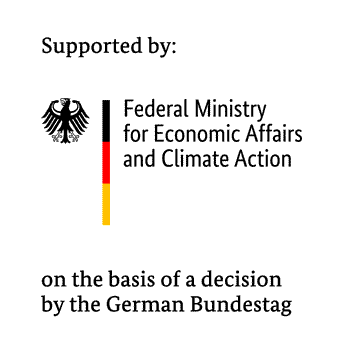RD3.0 Redispatch 3.0
Motivation
With the high penetration of distributed energy resources (DERs), the regulatory framework and grid operation procedure were adjusted in the amendment to the Grid Expansion Acceleration Act (NABEG 2.0). Involving the DSOs in congestion management is an important step in implementing the so-called "Redispatch". These aim to avoid grid bottlenecks across all grid levels and thus make them more efficient, economical, and resilient.
The current Redispatch 2.0, renewable energy power plants and CHP plants from 100 kW as well as the controllable load, can be remotely controlled by network operators. In the future, forecasting of grid congestion will be carried out by TSOs and DSOs with corresponding dispatch potential and requirements to enhance transparency and flexibility potentials from all voltage levels to all other voltages.
Goal
The project "Redispatch 3.0" aims to improve the integration of low-voltage plants as well as the cooperation and exchange of information between DSOs and with TSOs. The goal is to further develop existing concepts for Redispatch 2.0 and to implement, test, and evaluate the approaches developed on a pilot basis. Within this project, there are five research phases:
Phase 1: Requirements analysis phase identifies and classifies the uses cases of two application variants which are documented in the use case templates. Selected system components and technologies of each application variant are defined for the overall system architecture of two field tests within this project.
Phase 2: Development of basic technologies phase defines requirements for practical implementation including incentive models for post-marketing flexibility, the technical connection of small plants via iMSys/CLS interface of SMGWs, communication descriptions for the network operator communication cascade, and the development of algorithmic optimizations for operation planning and management.
Phase 3: Development of the application variants phase aims to prepare two field tests under real conditions. In addition, the real-time cascade communication is evaluated by integrating the SCADA app and network control system (NLS) in the laboratory environment to determine the time behavior of distribution low-voltage network systems as prerequisites of Redispatch 3.0.
Phase 4: Field tests phase aims to implement two field tests that differ both in the technical aspect (i.e. model and simulation-driven network state forecast and data-driven network state forecast) and field test areas structure (i.e. urban and rural). Thus, the two field tests can provide insights on how network operators can participate in Redispatch 3.0 by mapping the existing structures of the low-voltage grids in Germany.
Phase 5: Post-marketing potential phase analyzes the potential unused flexibilities of small-scale plants by obtaining result data from the two field tests. The post-marketing potential is assessed qualitatively and quantitatively between the application variants.
Technologies
Within the scope of the overall project, OFFIS evaluate the development of options for connecting technical systems via the iMSys, which is currently being rolled out, as well as the development of the real-time cascade communication in particular with decentralized plants at the low-voltage level so that Redispatch 3.0 can work reliably and quickly. In the area of potential for unused flexibilities analysis, OFFIS aims to develop an agent-based simulation environment for small systems with which the unused flexibility potential can be examined. In addition, OFFIS also provides standardized knowledge to disseminate and document the results in a suitable standardized manner to the third parties by using use case template IEC 62559-2 and harmonization in the Smart Grid Architecture Model (SGAM).
OFFIS is responsible for project management of the overall coordination as well as project-related public relations.
Internal Leader
Scientific Director
Krueger, Carsten and Otte, Marcel and Holly, Stefanie and Rathjen, Saskia and Wellssow, Arlena and Lehnhoff, Sebastian; ETG Congress 2023; Juli / 2023
Niemann, Laura and Wellßow, Arlena and Kuchenbuch, René and Werth, Oliver and Uslar, Mathias; Wirtschaftsinformatik 2024 Proceedings; September / 2024
Otte, Marcel and Krüger, Carsten and Das, Pratyush and Rohjans, Sebastian and Lehnhoff, Sebastian; Energy Informatics Academy Conference; October / 2024
Otte, Marcel and Krüger, Carsten and Das, Pratyush and Rohjans, Sebastian and Lehnhoff, Sebastian; DACH+ Conference on Energy Informatics 2024; October / 2024
www.psigridconnect.com
www.energymeteo.com
www.kisters.de
www.ewe-netz.de
www.mvv-netze.de
www.efr.de
www.dke.de
www.fit.fraunhofer.de
www.iee.fraunhofer.de
www.uni-kassel.de/eecs/e2n/startseite
www.ie3.etit.tu-dortmund.de
www.tennet.eu/de
www.50hertz.com
www.transnetbw.de
www.openkonsequenz.de
www.ewr-netz.de
www.psienergy.de
www.netz-leipzig.de



